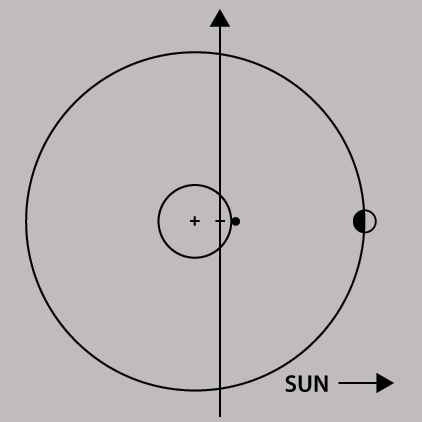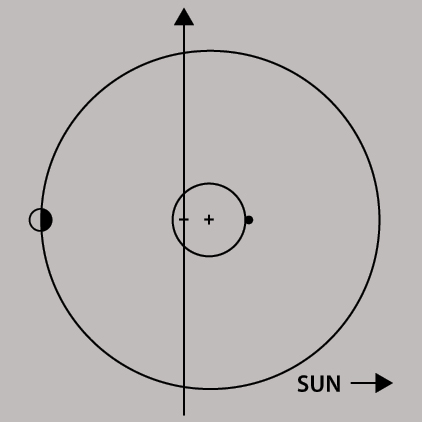Compass Confusion: The Answers
Spring-Summer
2016
Physics Puzzler
Compass Confusion: The Answers
Out of luck in the Outback
By:Donald Simanek Emeritus Professor of Physics, Lock Haven University of Pennsylvania
You can compare the earth's near-dipole field to a short magnet with its south magnetic "pole" directed toward the north geographic pole of the earth. The magnetic pole of a compass needle is defined to be the "north-seeking" end, i.e., the end that "seeks" (points generally toward) the north geographic pole.

Small pocket compasses have a magnetic needle pointer balanced on a sharp pivot. In use, the compass case is held in a horizontal plane. In the northern hemisphere, the magnetic field dips downward toward the north (the dip angle), which would cause the north-pointing end of the needle to droop downward. To prevent this, compasses intended for use in the northern hemisphere have the south-pointing end of the needle weighted to balance it. If a north hemisphere compass is used in the southern hemisphere, the south pointing end of its needle would dip a lot more, since that is the weighted end and the field lines dip toward the south. The needle would likely drag on the base of the compass. Simple compasses for use in the southern hemisphere have the north-pointing end of the needle weighted to prevent this. In fact, manufacturers of compasses customize them for five separate geographic zones.
Magnetic compasses used by explorers of the American West were weighted for use in North America. Today one can buy compasses with "global needles" that work equally well in both hemispheres. They have a double system, pivoting the magnets and the needle separately, but coupled. The tilt of the internal magnet doesn't tilt the needle. Since our explorer's compass was so old, it did not have this newer mechanism.

Compasses for determining accurate direction with reference to maps are generally held horizontally, and some have devices for sighting landmarks on the horizon. Had our explorer been more savvy about physics he might have tried holding his compass inclined at an angle until the needle moved freely. Raising it slowly to horizontal, being careful not to rotate it about a vertical axis, he could read the compass bearings correctly. Whether this would work would depend on how the magnetic needle was suspended.
This question arises frequently on the web, often with misleading and wrong answers. People ask, "Will a magnetic compass I use in the USA also work in Australia?" One answer I've seen was "You need one with the needle magnetised the other way round, so it points south instead of north." This may have been a joke. It is true that near the magnetic poles simple magnetic compasses are less sensitive, because the horizontal component of the earth's field is weaker there. In Northern Canada and Southern Australia magnetic compasses perform poorly. But the north-pointing end points northward at mid latitudes in either hemisphere. //
Feedback is appreciated from readers. If you have a favorite physics puzzle that is not well known, not easily found on the web, or in the many published physics problem books, send it to dsimanek [at] lhup.edu. Include your answer, too, if you have one. If used, we'll credit you. I especially like puzzles that can be solved with insightful and simple arguments, preferably with minimal mathematics.
